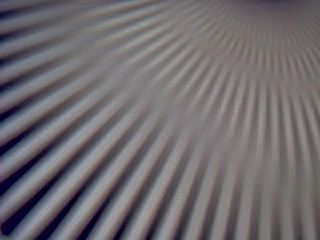
| Main Page |
|
Capacitance |
|
Polarization | Cursos |
 |
Neil C. Bruce | |||||
|
Numerical Calculations of the
scattering of light from randomly rough surfaces with rectangular
shaped grooves.
The geometry of the 2D problem is shown below:
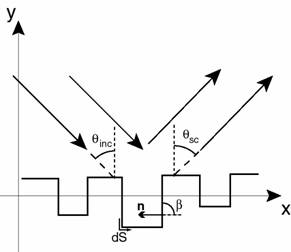
where n is the surface normal, and and are the incident and scattering angles, respectively. We use the Kirchhoff approximation to calculate the scattered intensity for this case. The Kirchhoff approximation can be written as

where ![]() and
and ![]() are the incident and scattered fields,
respectively, R is the Fresnel reflection coefficient, and the
functions H( ) are Hankel functions.
are the incident and scattered fields,
respectively, R is the Fresnel reflection coefficient, and the
functions H( ) are Hankel functions.
The usual formulation of the Kirchhoff approximation uses
![]()
![]()
![]()
where h´(x) is the slope of the surface. Substituting in the equation for the scattered field gives

This equation contains the surface slope and so is undefined for the surface shown above, which has infinite slopes. To overcome this problem, we use
![]()
which leads to the equation for the scattered field of

And this equation can be used for the rectangular grooved surface.
Below we show three different surfaces with constant groove separation and width and a random groove depth with a width of the depth distribution given by the numbers at the side of the graph.
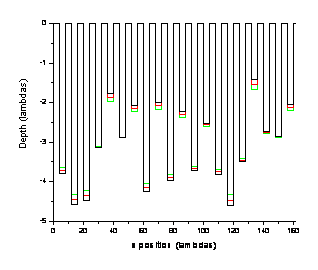 |
|
For these three, very similar, surfaces the double scattered intensity in the backscattered direction varies from zero to its maximum value. In the following graphs the backscatter direction is -30°.
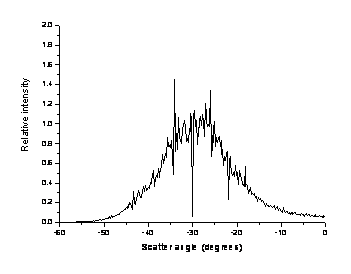 |
Dh = 1.443l
|
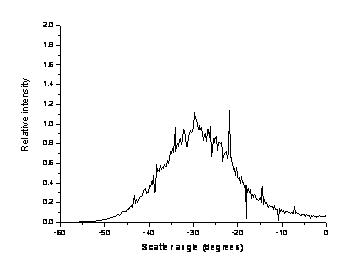 |
Dh = 1.590l
|
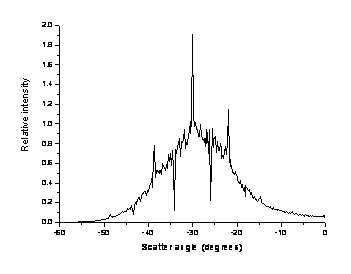 |
Dh = 1.734l
|
Publications
| ICAT |